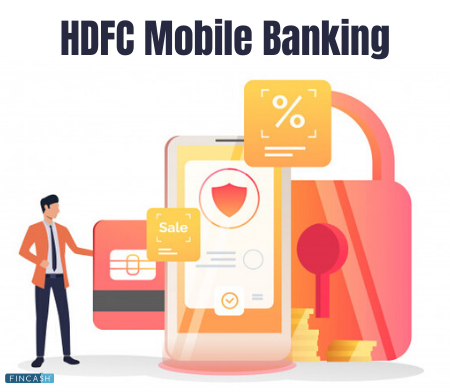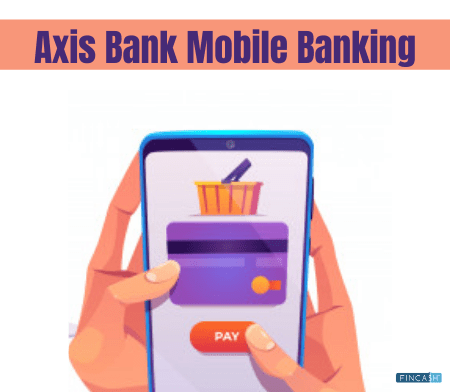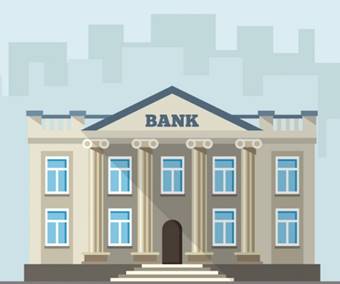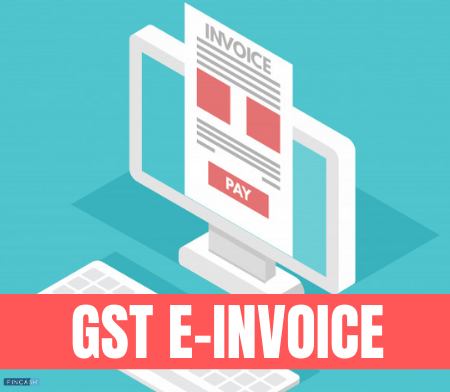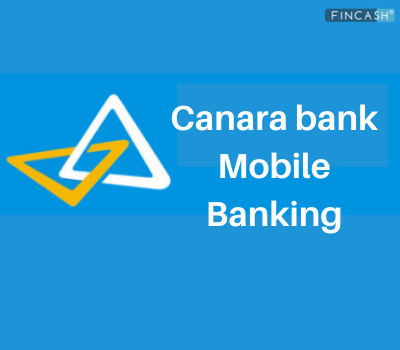
Table of Contents
- A brief e-banking introduction
- Types of e-banking services
- How does e-banking work?
- Benefits of e-banking
- Security features of e-banking
- How to get started with e-banking?
- What are the risks of e-banking?
- How to protect yourself when using e-banking?
- Precautions to take upon suspecting fraud or identity theft
- e-Banking in India
- e-Banking Vs. Internet banking
- The bottom line
What is e-Banking?
Today, people don’t have to stand in long queues at the Bank anymore to transfer money or obtain an account statement. Banking is now much more rapid and convenient, thanks to constantly evolving banking technologies dominating the finance sector. Post the 2016 demonetisation in India, the scope for digital banking has expanded more quickly.
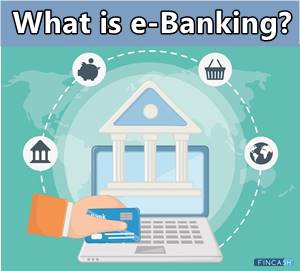
Most Indian banks have launched websites for internet banking and mobile banking to offer their customers access to nearly all banking products online. e-Banking, often known as electronic banking, is one of the most significant aspects of the current financial environment.
If you are still untouched by the concept of transferring and receiving money online, this article will help you comprehend the bits of pieces of e-Banking in detail. Let's have a read ahead.
A brief e-banking introduction
e-Banking is a term used for the various financial transactions carried out online. This can include:
- Using a bank's application on a smartphone
- Logging into an online banking portal
- Using a voice assistant to check account balances
- Transfer funds quickly And much more.
e-Banking is convenient as it offers more features than traditional banking systems such as instant transfer/ deposit, paying bills, transactions for shopping, etc. without waiting in line or filling out forms. It is also highly secure and safe as banks are adopting advanced encryption technologies to protect customer data.
Types of e-banking services
1. Internet banking
Internet banking enables you to conduct a variety of financial and non-financial operations online. This can be done by visiting the bank's official website and logging into your account.
2. Mobile banking
Several major and small-scale banking institutes have introduced their own dedicated mobile applications. These apps are available for both iOS and Android platforms. You can easily download the app and get done with transactions.
3. ATM
Automated Teller Machines (ATMs) are one of the most popular services offered under e-banking. It is more than just a cash withdrawal device as it enables you to:
- Check the status of your account
- Transfer money
- Deposit money
- Update your mobile number
- Change your Debit Card PIN And more.
Talk to our investment specialist
4. Electronic Data Interchange (EDI)
EDI is a new technology that replaces the traditional paper-based method of information exchange between organisations by adopting a standardised electronic format.
5. Credit card
A credit card is generally offered by banks after looking into your credit history and score. With this card, you can withdraw a pre-approved amount and pay it back either in a lump sum amount or in varying EMIs. You can even shop around with this card.
6. Debit card
It is one of the most common types of e-banking services. They are connected to the bank accounts and make it simple to:
- Purchase at POS terminals
- Make online transactions
- Withdraw money from ATM
7. Electronic Fund Transfer (EFT)
This is a term used to describe the electronic transfer of funds from one bank to another. It includes:
- National Electronic Fund Transfer (NEFT)
- Real-time Gross Settlement (RTGS)
- Immediate Payment Service (IMPS)
- Direct debit
- Direct deposits
- Wire transfers And more.
8. Point of Sale (POS)
A point of sale is the time and location (retail outlet) at which a consumer uses a plastic card to pay for products or services they have purchased or received.
How does e-banking work?
Usually, there are three parties involved in an e-Banking transaction:
- Bank
- Customer
- Merchant
Some transactions just require the involvement of the bank and the customer. By making the request online, travelling to a store, or going to an ATM, the customer starts the transaction. Based on the accuracy of the information supplied in the request (card number, address, routing number, or account number), the bank receives the request and, in the case of withdrawals, decides whether to allow or refuse the electronic transfer of cash. After processing, the money is sent electronically to or from the customer's account and to the correct party.
Benefits of e-banking
If you are still trying to comprehend why you should be using e-banking, here is a list of compelling reasons to help you out:
- Convenience: You can conduct transactions at any time, from anywhere, with an internet connection
- Speed: Transactions are processed immediately, so you don't have to wait for cheques to clear or for funds to be transferred
- Security: e-Banking services are usually secure with multiple layers of protection
- Control: This Facility gives you more control over your finances. With online banking, you can easily track your spending, set budgeting and savings goals, and stay on top
- Accuracy: These transactions are typically processed more quickly and accurately than traditional paper-based transactions.
Security features of e-banking
e-Banking is a convenient and efficient way to manage your finances. However, it is important to understand the security features to protect your personal and financial information.
Data encryption
It is a process of transforming readable data into an unreadable format. This ensures that only authorised individuals can access the data. The moment you log into your bank account on the internet, your user ID and password are encrypted before they get transmitted on the internet. This prevents anyone from intercepting and reading your confidential information.
Two-factor authentication
It is a process of verifying your identity using two different factors. e-Banking also uses varying authentication methods, such as biometrics and one-time passwords. They make it even more difficult for someone to access your account without your permission.
How to get started with e-banking?
To get started with e-banking, you will need access to a computer or mobile device with an internet connection. You will also require a customer ID and password, which you must enter each time you want to log in to your account. You may also need additional security measures, such as a One-Time PIN (OTP), usually sent to your mobile phone via SMS.
What are the risks of e-banking?
Despite many security measures in place, some risks are still associated with using e-banking services. These include:
- Identity Theft: If your personal information is stolen, it could be used to access your account and conduct fraudulent transactions
- Phishing Scams: Criminals may trick you into disclosing your login details or other sensitive information by impersonating a bank or other trusted organisation
- Malware: Malicious software (malware) can be used to infect your computer and gain access to your account. In case you click a malicious link or download an infected file, this can happen
How to protect yourself when using e-banking?
There is a variety of things you can do to protect yourself when using e-banking services, such as:
- Never disclose your login details or other sensitive information to anyone, even if they claim to be from your bank
- Make sure you are logging in to your account only from a secure, private computer or mobile device
- Ensure your devices have up-to-date anti-virus software installed
- Be mindful when it comes to clicking links or downloading files from unknown sources
Precautions to take upon suspecting fraud or identity theft
In case you have suspected that your account has been compromised or you have experienced fraud or identity theft, you must contact your bank immediately. They will be able to help you cancel any unauthorised transactions and take steps to protect your account in the future.
e-Banking in India
Since ICICI Bank launched e-banking services in India in 1997, many banks gradually started adapting and providing the same to their customers. You can access e-banking services from all major banks. The services offered can vary, but you can generally use it to do most of your financial transaction that you would normally do in a branch or over the phone. This includes tasks such as:
- Transfer money using IMPS, RTGS, NEFT
- Tracking Account Statement
- investing in Mutual Funds, etc
- Paying EMIs
- Applying for loans
- Paying insurance premium
- Fixed deposits
- Making bill payment, like Gas, electricity, etc
- Applying for a cheque book, debit card / credit card
- Block debit / credit card
- Add or remove beneficiary account
- Update personal information
- Change / update home branch
- Book flights / hotels, etc
e-Banking Vs. Internet banking
Internet banking and electronic banking are frequently conflated. However, these are two different services provided by banks.
A digital payment system known as internet banking, online banking, or net banking allows one to conduct financial or non-financial transactions online. On the other side, e-banking refers to all banking services and acts carried out electronically. Customers can access all banking services, such as fund transfers, deposits, and online bill payments, through internet banking and those that are often only available through a local branch.
The term 'electronic banking' refers to various transaction services, including internet banking, mobile banking, telebanking, ATMs, debit cards, and credit cards. One of the most recent innovations to electronic banking is internet banking. Internet banking is, therefore, a type of electronic banking.
The bottom line
There is no doubt that banking has advanced significantly with the availability of different e-banking services. Additionally, banks have ensured that all of these services are convenient and that anyone can easily use them. Rest assured that all your financial transactions using e-banking are entirely safe and secure, thanks to the sophisticated security mechanisms protecting all electronic transactions. If you're not already taking advantage of e-banking, you must try it. It's one of the easiest ways to stay on top of your finances and save you time and hassle.
All efforts have been made to ensure the information provided here is accurate. However, no guarantees are made regarding correctness of data. Please verify with scheme information document before making any investment.

